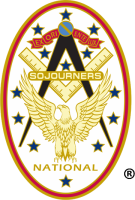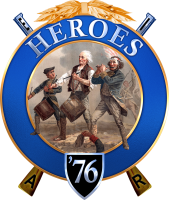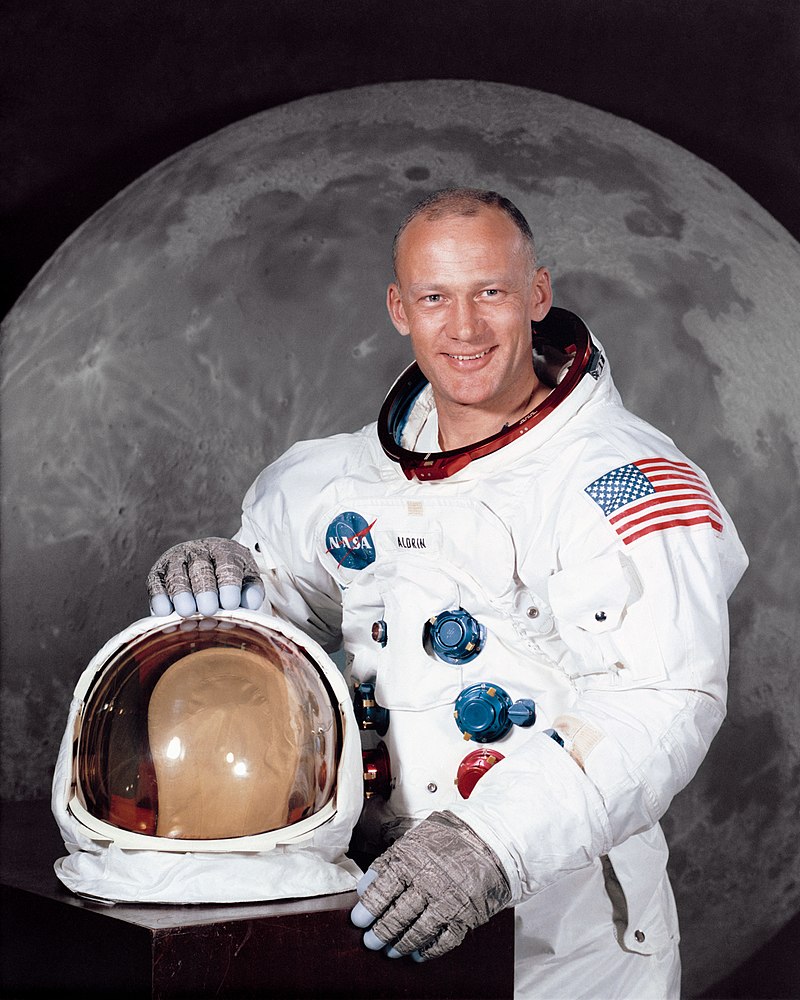Buzz Aldrin was born on January 20, 1930, in Montclair, New Jersey. His father, a colonel in the U.S. Air Force, encouraged his interest in flight. Aldrin became a fighter pilot and flew in the Korean War. In 1963, NASA selected him for the next Gemini mission. In 1969, Aldrin, along with Neil Armstrong, made history when they walked on the moon as part of the Apollo 11 mission. Aldrin later worked to develop space-faring technology and became an author, writing several sci-fi novels, children’s books, and memoirs including Return to Earth (1973), Magnificent Desolation (2009) and No Dream Is Too High: Life Lessons From a Man Who Walked on the Moon (2016).
Biography: Famed astronaut Buzz Aldrin was born Edwin Eugene Aldrin Jr. on January 20, 1930 in Montclair, NJ. He earned his nickname, “Buzz,” as a child when his little sister mispronounced the word “brother” as “buzzer. His family shortened the nickname to “Buzz.” Aldrin would make it his legal first name in 1988. In 1947, Buzz graduated from Montclair High School in Montclair, NJ, and headed to the U.S. Military Academy at West Point. He took well to the discipline and strict regimens, and was the first in his class his freshman year. He graduated third in his class in 1951 with a B.S. in mechanical engineering.
Personal Life: Aldrin has been married three times. He and his first wife, actress Joan Archer, had three children together – James, Janice and Andrew. His second wife was Beverly Zile. He married his third wife, Lois Driggs Cannon, on Valentine’s Day in 1988. They divorced in 2012.
Military Career: Aldrin officially entered the U.S. Air Force in 1951. He again scored near the top of his class in flight school, and began fighter training later that year. During his time in the military, Aldrin joined the 51st Fighter Wing, where he flew F-86 Sabre Jets in 66 combat missions in Korea. Aldrin’s wing was responsible for breaking the enemy “kills” record during combat, when they shot down 61 enemy MIGs and grounded 57 others in one month of combat. Aldrin shot down two MIG-15s, and was decorated with the Distinguished Flying Cross for his service during the war. After a cease-fire was declared between North and South Korea in 1953, Aldrin returned home. He pursued higher education at the Massachusetts Institute of Technology where he planned to complete a master’s degree and then apply for test pilot school. Instead, he earned a Ph.D. in aeronautics and astronautics, graduating in 1963. His thesis subject “Line-of-sight guidance techniques for manned orbital rendezvous” was the study of bringing piloted spacecraft into close proximity with each other.
Space Flight: His Ph.D. helped to earn him entry into the space program shortly after graduation. In 1963, Aldrin was part of a third group of men selected by NASA to attempt to pioneer space flight. He was the first astronaut with a doctorate and because of his expertise he earned the nickname “Dr. Rendezvous.” Aldrin was put in charge of creating docking and rendezvous techniques for spacecraft. He also pioneered underwater training techniques to simulate spacewalking. In 1966, Aldrin and astronaut Jim Lovell were assigned to the Gemini 12 crew. During their November 11 to November 15, 1966, space flight, Aldrin made a five-hour spacewalkΓÇöthe longest and most successful spacewalk ever completed at that time. He also used his rendezvous abilities to manually recalculate all the docking maneuvers on the flight after the on-board radar failed. He also took a photograph of himself, which would later be called the first “selfie” in space, on that mission. After Gemini 12, Aldrin was assigned to the back-up crew of Apollo 8 along with Neil Armstrong and Jack Schmitt. For the historic Apollo 11 lunar landing mission, Aldrin served as the lunar module pilot. On July 20, 1969, he made history as the second man to walk on the moon, following mission commander Armstrong, who took the first step on the lunar surface. They spent a total of 21 hours during the moonwalk, and returned with 46 pounds of moon rocks. The walk, which was televised, drew an estimated 600 million people to watch, becoming the world’s largest television audience in history. Upon their safe return to Earth, Aldrin was awarded the Presidential Medal of Freedom, followed by a 45-day international goodwill tour.
Other honors include having Asteroid “6470 Aldrin” and the “Aldrin Crater” on the moon named after him. Aldrin and his Apollo 11 crewmates Neil Armstrong and Michael Collins also received the Congressional Gold Medal in 2011, and the Apollo 11 crew was honored with four stars on the Hollywood Walk of Fame in California. In March 1972, after 21 years of service, Aldrin retired from active duty and returned to the Air Force in a managerial role. He later revealed in his 1973 autobiography, “Return to Earth,” that he battled depression and alcoholism following his years with NASA. After struggling with divorce and maintaining sobriety, Aldrin turned to studying advancements in space technology. He devised a spacecraft system for missions to Mars known as the “Aldrin Mars Cycler,” and has received three U.S. patents for his schematics of a modular space station, Starbooster reusable rockets, and multi-crew modules. He also founded the ShareSpace Foundation, a nonprofit organization devoted to advancing space education, exploration and affordable space flight experiences. In 2014, he revamped the nonprofit to focus on STEAM Education (Science, Technology, Engineering, Arts and Math) to inspire children from kindergarten through 8th grade to learn about space. In August 2015, he launched the Buzz Aldrin Space Institute at Florida Tech to promote and develop his vision of a permanent human settlement on the planet Mars. Aldrin became a prolific author. In addition to his first autobiography, “Return to Earth,” he wrote “Magnificent Desolation.” a memoir that hit bookshelves in 2009 – just in time for the 40th anniversary of his historic moon landing. He has also written several children’s books, including “Reaching for the Moon” (2005), “Look to the Stars” (2009) and “Welcome to Mars: Making a Home on the Red Planet” (2015); science-fiction novels including “The Return” (2000) and “Encounter with Tiber” (2004), co-authored with John Barnes; and “Men from Earth” (1989), a historical account of the lunar landing. He released the memoir “No Dream Is Too High: Life Lessons From a Man Who Walked on the Moon” (2016). In November 2016, Aldrin toured Antarctica, where he had to be medically evacuated to be treated at a hospital in New Zealand. A statement on his website said he was in stable condition with fluid in his lungs, but in good spirits and responding well to antibiotics.
Masonic History: Buzz Aldrin was initiated and passed in Oak Park Lodge #864 in Montgomery, AL in February and April 1955. He was raised at Lawrence N. Greenleaf Lodge #169 in Denver, CO in February 1956. He took his York Rite Degrees and Orders in Waco, TX in May 1967. He is a member of Clear Lake Lodge #1417 in Seabrook, TX and Montclair Lodge #144 in NJ. He is also a 33° Scottish Rite Mason in the Valley of Houston S.J., a Knight Templar, a Shriner, and a National Sojourner. Brother Aldrin was initiated as a National Sojourner at the Annual National Convention in Cocoa Beach in June 1969 just before his July 1969 moon landing. Of note, Brother Aldrin flew the Scottish Rite, S.J. Supreme Council’s flag on the moon. That flag is now on display in the Masonic Museum of the Supreme Council Scottish Rite Temple in Washington, D.C. In addition, Brother Aldrin carried with him a Special Deputation from the Grand Master of Texas constituting and appointing him as Special Deputy of the Grand Master, granting unto him full power in the premises to represent the Grand Master as such and authorize him to claim Masonic Territorial Jurisdiction for The Most Worshipful Grand Lodge Ancient Free and Accepted Masons of Texas on The Moon, and directed that he make due return of his acts.



